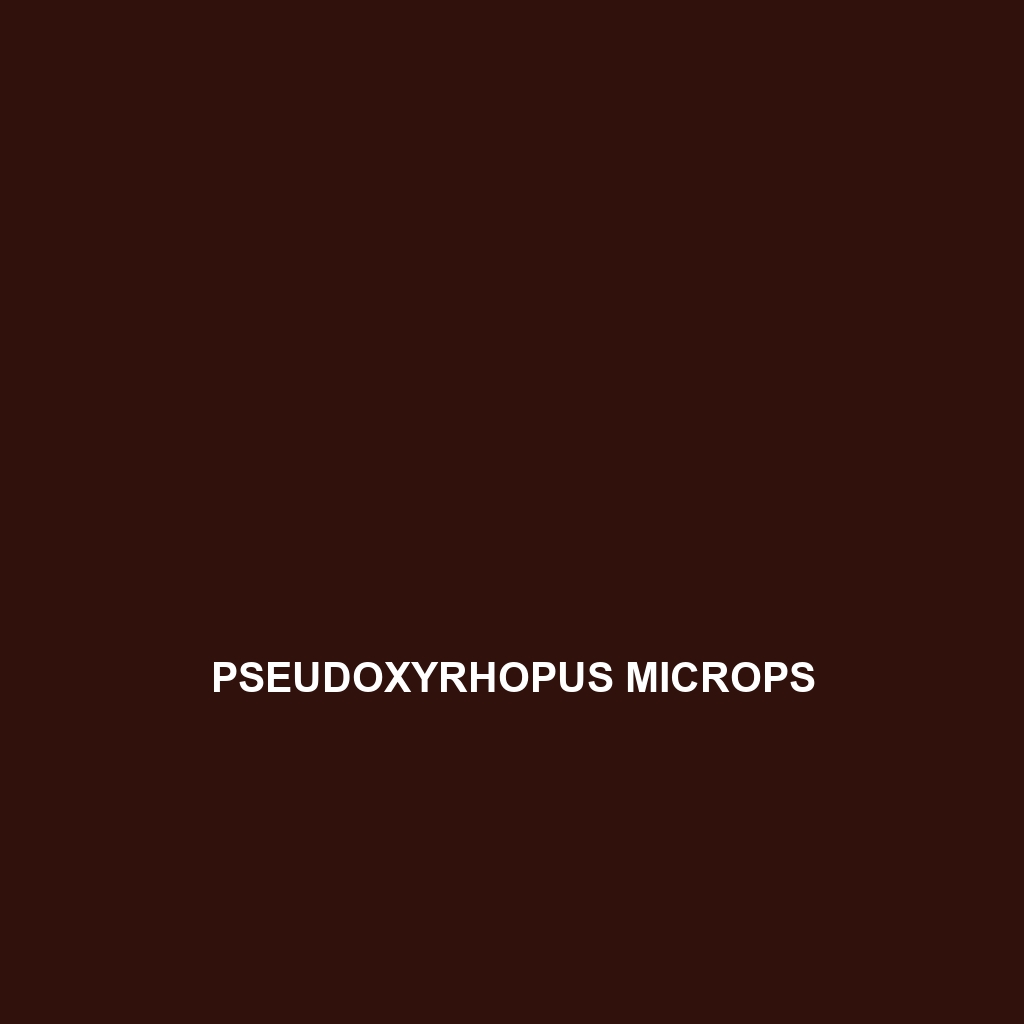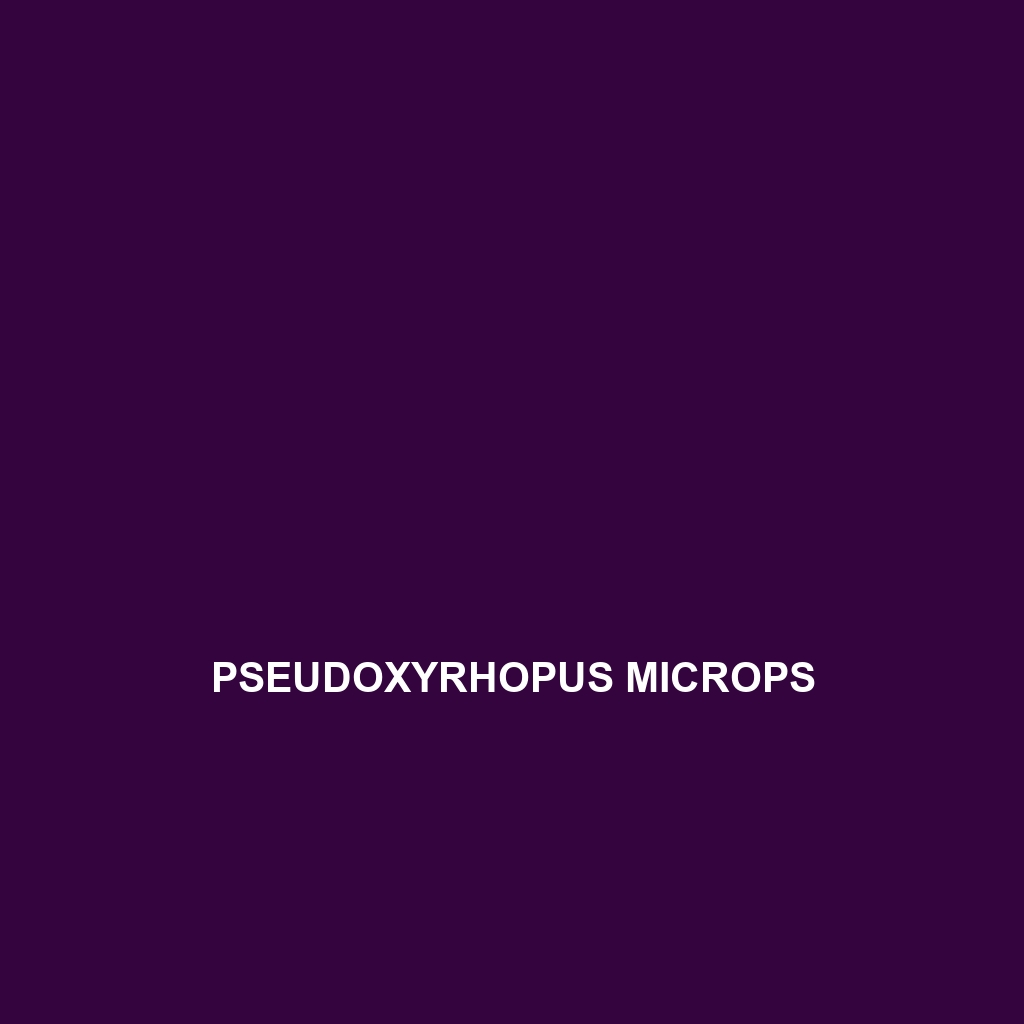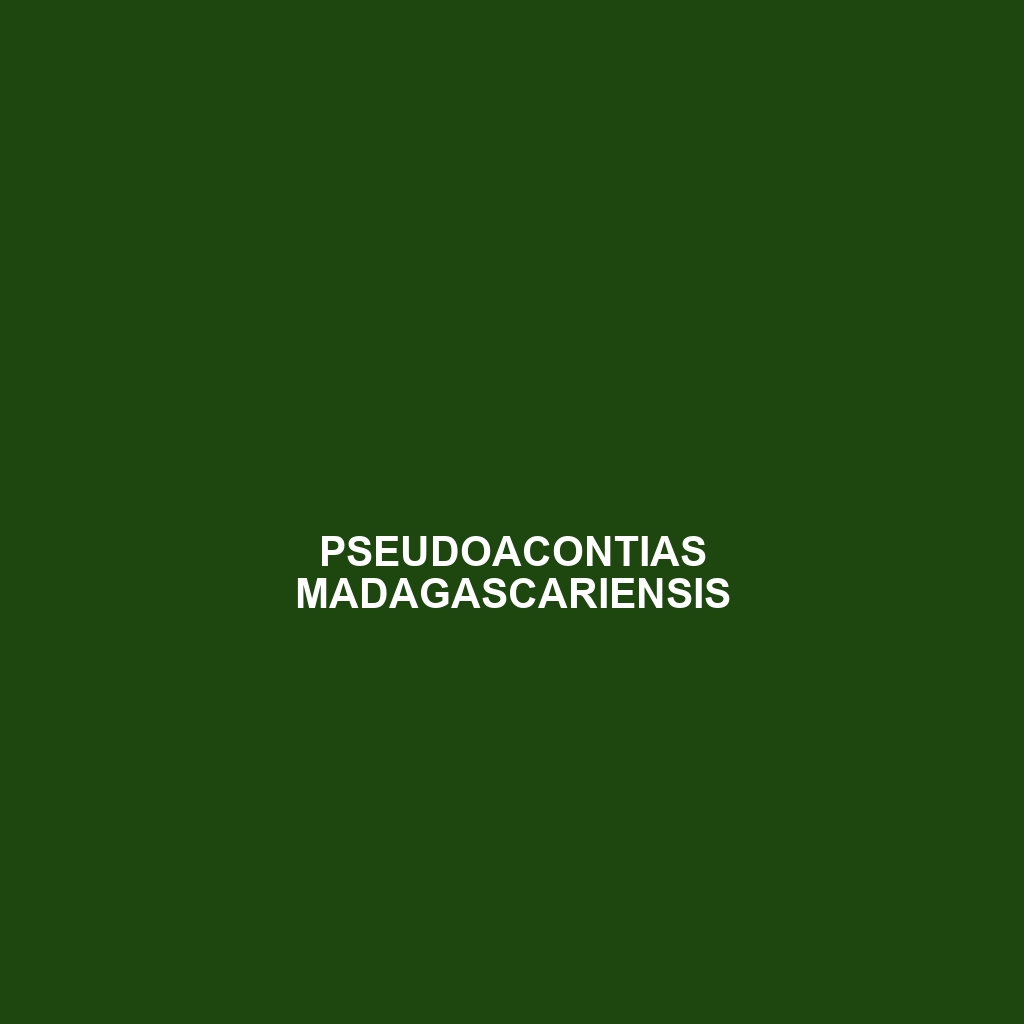<p><b>Pseudoxyrhopus microps</b>, commonly found in Madagascar's humid rainforests, is a slender, nocturnal snake that grows between 60 to 100 cm and primarily feeds on insects. This adaptable species is recognized for its unique camouflage, reproductive behaviors during the wet season, and plays a vital role in controlling insect populations within its ecosystem.</p>
Tag: Madagascar rainforests
Pseudoxyrhopus analabe
<p><b>Pseudoxyrhopus analabe</b>, a vulnerable species native to Madagascar's rainforests, is a small to medium-sized, nocturnal snake known for its striking camouflage and arboreal habits. Primarily an insectivore, it plays a crucial role in regulating invertebrate populations and maintaining ecosystem balance.</p>
Pseudoacontias madagascariensis
<strong>Madagascar Legless Skink (Pseudoacontias madagascariensis)</strong>: This unique, nocturnal reptile, measuring 20-30 cm, thrives in Madagascar's diverse habitats, showcasing a serpentine body with smooth scales and a diet primarily consisting of ants and termites. Currently listed as vulnerable, it plays a crucial ecological role by regulating insect populations and contributing to soil aeration.
Pseudoxyrhopus microps
<p><b>Pseudoxyrhopus microps</b>, commonly found in Madagascar's humid rainforests, is a slender, nocturnal snake that grows between 60 to 100 cm and primarily feeds on insects. This adaptable species is recognized for its unique camouflage, reproductive behaviors during the wet season, and plays a vital role in controlling insect populations within its ecosystem.</p>
Pseudoxyrhopus analabe
<p><b>Pseudoxyrhopus analabe</b>, a vulnerable species native to Madagascar's rainforests, is a small to medium-sized, nocturnal snake known for its striking camouflage and arboreal habits. Primarily an insectivore, it plays a crucial role in regulating invertebrate populations and maintaining ecosystem balance.</p>
Pseudoacontias madagascariensis
<strong>Madagascar Legless Skink (Pseudoacontias madagascariensis)</strong>: This unique, nocturnal reptile, measuring 20-30 cm, thrives in Madagascar's diverse habitats, showcasing a serpentine body with smooth scales and a diet primarily consisting of ants and termites. Currently listed as vulnerable, it plays a crucial ecological role by regulating insect populations and contributing to soil aeration.
Phelsuma robertmertensi
Experience the vibrant <b>Phelsuma robertmertensi</b>, or Robert Mertens' day gecko, known for its striking green color and adaptability to Madagascar's lush rainforests. This insectivorous species thrives in high humidity and plays a vital role in its ecosystem by acting as both predator and pollinator.
Phelsuma malamakibo
<p><b>Phelsuma malamakibo</b>, also known as the Malamakibo day gecko, is a vibrant omnivorous lizard native to Madagascar, characterized by its brilliant green skin with blue or yellow spots and large red eyes. This species thrives in varied habitats, primarily rainforests and temperate forests, and plays a crucial role in its ecosystem by controlling insect populations and aiding in pollination.</p>
Phelsuma antanosy
The Phelsuma antanosy, or Antanosy Day Gecko, is a vibrant green lizard native to Madagascar's rainforests, reaching 15 to 20 cm in length and thriving in humid, dense foliage. As an insectivore, it plays a crucial role in regulating insect populations and contributes to pollination, while its unique tail regeneration and territorial behaviors make it a fascinating species to observe.
Paroedura tanjaka
<p><b>Paroedura tanjaka</b>, also known as the Tanjaka gecko, is a nocturnal insectivorous reptile native to Madagascar's rainforests and deciduous forests. With a slender body, distinctive coloration, and the ability to shed its tail for escape, this species plays a vital role in controlling insect populations and maintaining ecological balance.</p>









